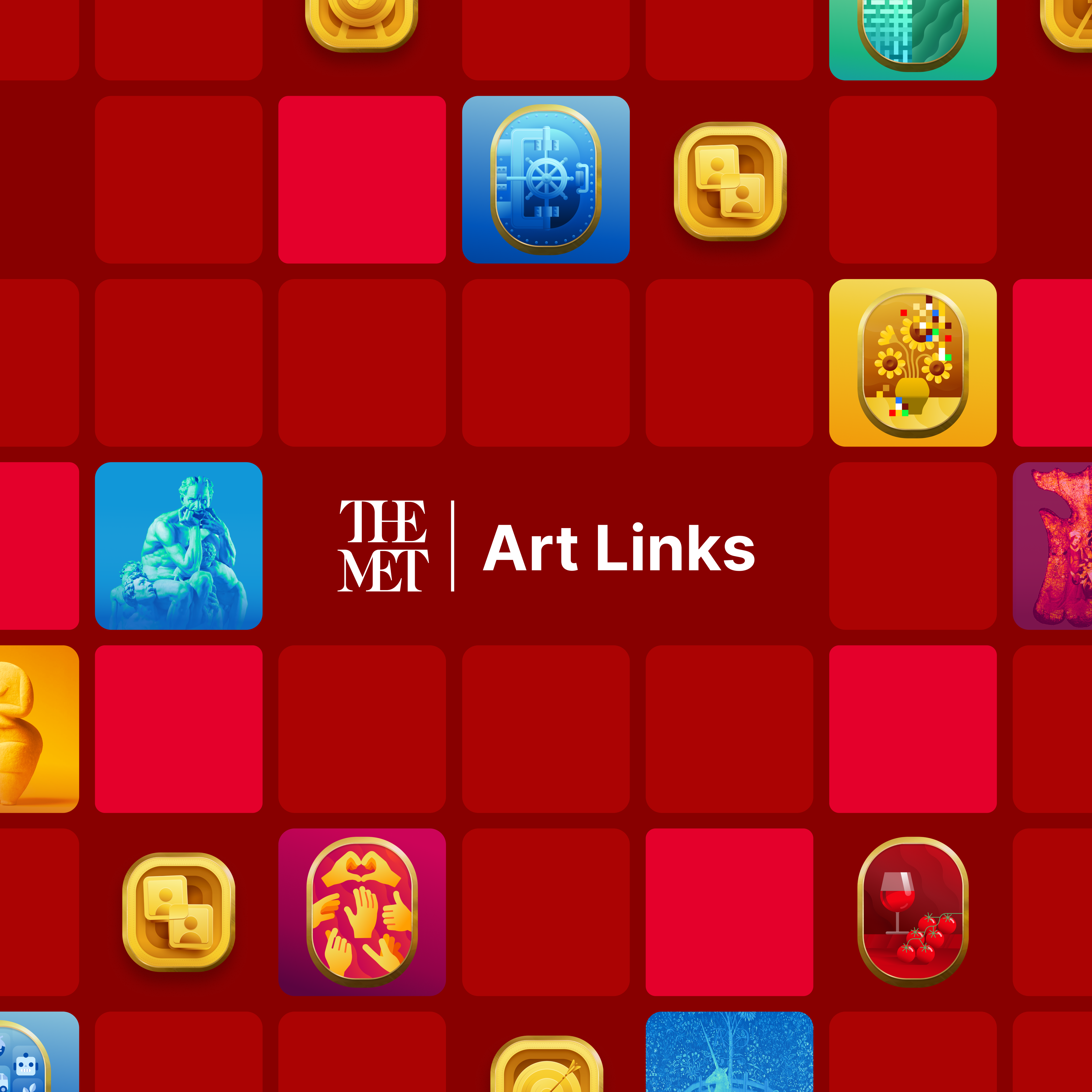Art Links
Connect artworks by finding common links and building chains in this blockchain-based game by The Met. No art history degree required. Created and developed with TRLab.
Complete the chain to claim digital collectibles and over time, unlock the chance to win exciting museum rewards!
Play the game here.
Week 1: Objects in Disguise
Not everything is always as it seems, especially when artists make one material look like another. Look closely at how objects were made to find this week’s connections!
How the artist’s unorthodox techniques fool and delight the eye
Week 2: Iconic!
Icons and symbols have a long and storied history, especially when used to communicate ideas, words, and emotions in art. Can the emojis we use today also be used to view artworks in a new light?
Artist in Residence Peter Hristoff meditates on the use of symbols in art as a means of communicating information about the artist, culture, time period, and even ourselves.
Week 3: Harlem As Muse
Harlem, New York is a neighborhood immortalized and made internationally famous by the cultural movement known as the Harlem Renaissance. The artists featured this week looked to Harlem as a subject and source of inspiration.
Week 4: Art x Tech
The history of art is a history of technological innovation. Artists have constantly sought new formulas, techniques, and tools to produce art, and in turn have contributed to technological advancement at large.
Week 5: Seeing Red!
Some of the most used and eye-catching emojis are vibrant shades of red. Artists also find themselves drawn to the dazzling color and often include it to draw attention to fine details.
Week 6: Everyday Materials in Art
Artists across time and space have proven that one's trash is another’s treasure. In our homes, workplaces, and, yes, trash cans dwell objects and materials that artists have used to create lasting, impactful art.
Week 7: America Made Modern: A Painter’s Vision
Few artists are more recognizable and celebrated than Georgia O’Keeffe. Known for her close-up depictions of flowers, animal skulls, and landscapes of the Southwestern United States, O’Keeffe’s style pioneered American Modernism.
Week 8: Codes, Ciphers, & Security
Whether entrusting the safekeeping of sacred spaces to a crouching sphinx or creating coded diagrams for a conceptual work, artists across the collection have often crafted tools for protection.
Week 9: Gestures, Signals, & Movements
Whether it’s a sassy tip of the hands 💁♀️ or resigned shrug 🤷♀️, some emojis communicate actions that speak to more complex emotions. Can you decode the movements and signals embedded across this week’s chain?
Week 10: Linen. Linen? Linen!
With humble beginnings from the inner fibers of flax plants, linen is a textile with almost endless capabilities in the hands of artists. This week’s challenge is to identify objects that incorporate linen as a material.
Week 11: Form & Function: An Artist’s Experimentations
Isamu Noguchi was a 20th- century sculptor, designer, and landscape architect known for his innovative forms and multi-cultural influences. Let’s explore Noguchi’s practice and consider the legacy of his work.
Week 12: Record-keeping & Ledgers
Keeping records, storing information, and logging transactions are the core uses of ledgers, but many art works in our collection perform similar functions. Works from paintings and account books to conceptual art and scraps of papyrus contain or represent records of ideas and information.
